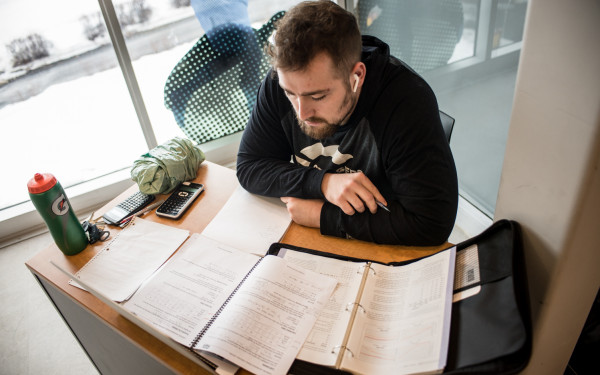Varsity Blues
Concordia’s Sports Clubs Can’t Yet Earn Varsity Status. But That’s Okay—They’ll Wait
Many things may keep Concordia baseball club head coach Howard Schwartz up at night. His team’s lack of varsity status isn’t one of them.
“I suppose I would break a little smile if we were varsity, but it’s just a personal ego thing and honestly it is not an issue,” he said.
Nonetheless, Schwartz admits obtaining the recognition that comes with the title of varsity is something he, like the rest of Concordia’s clubs, strives for.
“It’s an issue I’ve discussed with Katie over the years,” said Schwartz, referring to Katie Sheahan, the director of recreation and athletics at Concordia. “It’s really just a pride thing—I’d like to be varsity because it sounds more important.”
Not just to him or to his team, but to potential recruits as well.
“That’s the one drawback [of being a club],” said Schwartz. “It hasn’t happened, but it could, that McGill would get a student that I wanted [because of their baseball team’s varsity status].”
It’s equally a drawback for the likes of Concordia’s ski team, which misses out on key recruits in part due to having little visibility outside the university—let alone within it.
“I had to present myself in class this year, told them I am captain of the ski team and everybody looked up,” ski captain Paul Blanc-Paque told The Link two weeks ago. “No one knows we have a ski team.”
Though as much as the university’s baseball, ski, golf and cross-country clubs may like to join the varsity ranks, Sheahan said such moves aren’t in the department’s plans just yet.
“Every school has a threshold of how many fully-funded programs that you can field at a time,” she said.
Currently, that threshold is locked in at 10 for Concordia, where men’s football, men’s wrestling and men’s and women’s basketball, soccer, hockey and rugby fall under varsity.
“There’s a moratorium on developing new varsity teams while our priority remains facility development in the department,” Sheahan said.
“So it’s not a question of their proposal not being an earnest one; it’s just that the mandate we have for new development is strictly facility development at this stage.”
It’s a mandate that’s been in place since Sheahan’s arrival at the university in 2003, but don’t think it means the department sees its club teams as inferior to the varsity ones.
“All of our teams, whether they be club or varsity, are Stingers,” said department associate director John Bower.
Unfortunately, not everyone sees it that way.
“People often confuse the word varsity with quality of regard,” said Sheahan. “One of the things that I think is really important for people to recognize is that this is a classification that allows us to be clear about the resources that we allocate.
“The word isn’t meant to say that one sport is more important than another,” she explained, noting that, at Bishop’s University, women’s hockey is a club team while golf is a varsity team.
The opposite is true at Concordia, but you might have trouble telling, considering how fine the line dividing the two levels is.
Varsity team athletes have the luxury of seeing their resources—which include equipment, administrative and transportation support, according to Sheahan—mostly paid for by in a pre-approved budget by the department, and the opportunity to attend athletic therapy sessions.
But that aside, both varsity and club teams generally receive the same amount of attention from the department.
“I have regular meetings with [Sheahan], and when we have a meeting they’re two hours long and I have as many as I request,” said Schwartz. “We are treated with the utmost respect within the department, and that’s true for all the other clubs.”
Indeed, Schwartz isn’t the only one meeting with the department. Sheahan said she recently spoke with the ski team to look into equipment purchases, while Bower added the department is looking into ways to increase the golf team’s profile with offseason training camps.
And that’s not the only way the department makes the clubs feel a part of the group.
“We have the same expectations to follow,” said Schwartz.
“We have to follow [Canadian Interuniversity Sport] standards for drug testing, we have to attend student-athlete orientation—we have to do everything by the book,” he said, adding that his players must also follow the course load commitments and maintain good academic standing with the university, as is required of varsity athletes.
“Katie has the same commitment to us as she does to varsity,” Schwartz said.
As long as that commitment remains secondary to facility development, it may be quite some time before Schwartz’s team—or the rest of Concordia’s clubs—make the jump to varsity. But until then, the clubs can rest assured they’re in good hands.
“To say Katie’s been accommodating would be an understatement,” says Schwartz.

WEB)_792_288_90.jpg)
_600_832_s.png)

_600_375_90_s_c1.jpg)
2_600_375_90_s_c1.jpg)

_600_375_90_s_c1.jpg)